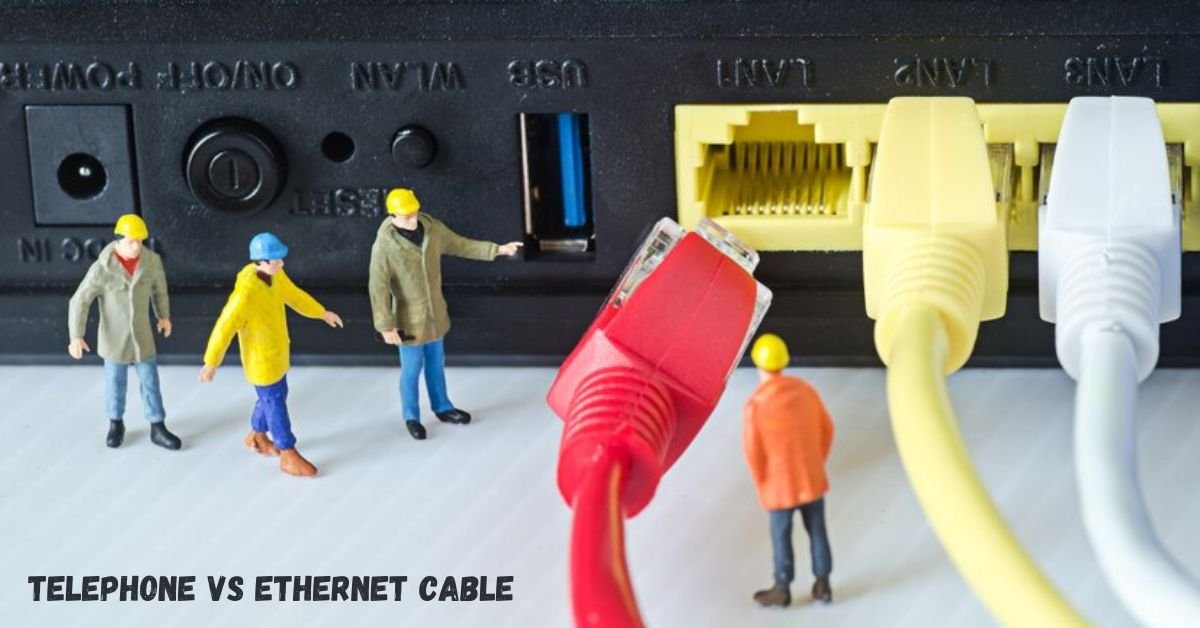In today’s interconnected world, the infrastructure that supports our communication systems is paramount. Two fundamental components of this infrastructure are telephone vs ethernet cable. While they may appear similar at a glance, they serve distinct purposes and possess unique characteristics. This article delves into the differences between telephone and Ethernet cables, exploring their physical attributes, functionalities, and appropriate applications.
Physical Characteristics
Connectors
One of the most noticeable differences between telephone and Ethernet cables lies in their connectors:
-
Telephone Cables: Utilize RJ11 connectors, which are smaller, featuring four or six pins. These connectors are primarily designed for voice transmission.
-
Ethernet Cables: Employ RJ45 connectors, larger than RJ11, with eight pins. RJ45 connectors are designed to handle data transmission for networking purposes.
Cable Structure
The internal wiring of these cables also differs:
-
Telephone Cables: Typically consist of 2 to 4 twisted pairs of copper wires, suitable for carrying voice signals.
-
Ethernet Cables: Contain 4 twisted pairs, totaling 8 wires, which are tightly twisted to reduce electromagnetic interference, enabling high-speed data transmission.
Functionality and Applications
Telephone Cables
Designed primarily for voice communication, telephone cables connect landline phones to wall outlets. They can also support low-speed data transmission, such as DSL internet connections, but are not suitable for high-speed networking.
Ethernet Cables
Ethernet cables are the backbone of wired networks, facilitating high-speed data transfer between devices like computers, routers, and switches. They support various networking standards, including Fast Ethernet, Gigabit Ethernet, and beyond.
Key Differences b/w telephone vs ethernet cable
The following table summarizes the primary distinctions between telephone and Ethernet cables:
| Feature | Telephone Cable (RJ11) | Ethernet Cable (RJ45) |
|---|---|---|
| Connector Size | Smaller | Larger |
| Number of Pins | 4 or 6 | 8 |
| Wire Pairs | 1 to 2 | 4 |
| Primary Use | Voice Communication | Data Networking |
| Max Data Speed | Up to 24 Mbps | Up to 10 Gbps or higher |
Interchangeability and Compatibility of telephone vs ethernet cable
It’s crucial to understand that telephone and Ethernet cables are not interchangeable:
-
Physical Fit: An RJ11 connector can physically fit into an RJ45 port due to its smaller size, but this can damage the port or lead to malfunction. Conversely, an RJ45 connector will not fit into an RJ11 port.
-
Signal Transmission: Even if a physical connection is made, the wiring configurations and signal requirements differ, rendering the connection ineffective or harmful to devices.
Conclusion about telephone vs ethernet cable
While telephone and Ethernet cables might look similar externally, their differences are significant in terms of design, functionality, and application. Understanding these distinctions is essential for setting up reliable communication and networking systems. Always ensure you’re using the appropriate cable type for your specific needs to maintain optimal performance and avoid potential damage to your equipment.

